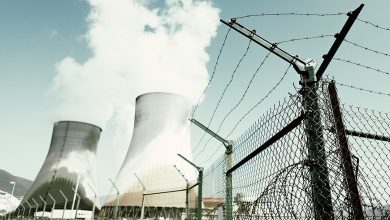AG&P: Driving energy transformation through clean fuel

Firmly looking ahead to recover from two years of pandemic restrictions, the Philippines has gradually opened up the economy to rekindle trade and industry. Ramping up vaccination coupled with strategic easing up of controls on key sectors contributed to a strong 7.1-percent GDP growth in the third quarter of 2021.[1] The Philippine economy is rearing its engines again – and it needs more power than ever to refuel its post-pandemic growth.
A looming crisis
The Department of Energy estimates the country’s peak power demand in 2021 to have hit 16,333 megawatts (MW)[2] – a seven-percent increase from 2020, the first year of the pandemic. Of this, 11,841 MW is from Luzon alone. The largest, most populated, and most economically productive region in the country, Luzon draws a third of its power supply from the Malampaya gas fields off the shore of Batangas.
The looming depletion of the Malampaya gas fields presents daunting challenges not only for Luzon but for the entire Philippines. The country’s post-pandemic recovery hinges largely on the availability of reliable and cost-efficient energy. From factories to commercial centers to the smallest homes in far-flung villages, a stable electricity supply is necessary to spur everyday economic activity.
Decarbonization
In the Philippines and elsewhere, the energy landscape is inevitably further linked to climate change. At the recent 26th Conference of Parties (COP 26) in Glasgow, Scotland, 200 member states reached a consensus to keep global temperature rise to below 1.5 degrees Celsius – a broad target that involves phasing down of fossil fuels and active restructuring of countries’ energy portfolios, as well as financing support for more sustainable sources of energy.
In the Philippines, where 57% of installed energy capacity comes from coal[3], the Department of Energy has emphasized energy security and climate justice as overriding pillars of the country’s energy transformation.
Minimizing dependence on fossil fuels while attaining energy security, however, are not mutually exclusive, and together they present infinite opportunities for innovation in the energy sector.
Energy transformation through Liquefied Natural Gas (LNG)/Natural Gas (NG)
Critical to driving decarbonization is achieving an energy mix that provides the most optimum results with the least impact on the environment. Liquefied natural gas, long considered the lowest-emission fuel available, presents unique opportunities in securing a clean and efficient energy supply.
The intermittent supply of renewable energy – further exacerbated by climate change – poses risks to the stability of power grids. Gas-fired power plants help address volatility issues of solar, hydro, and wind sources. Renewable energy requires an alternative, stable fuel capacity to support its intermittency. For most markets, natural gas is the cleanest and most commercially preferred source of stable capacity for a power system and works hand-in-glove with renewables.
“The fastest route to net-zero is innovative energy-efficient technologies and a rapidly growing adoption of LNG/NG as the transition fuel for cleaner air. The key thing is balance – you have to be sensible in providing the most optimized outcome for the country, and this balance is something that AG&P has envisioned to help achieve for the Philippines,” notes Anupam Ahuja, SVP, Strategic Services, Atlantic Gulf & Pacific (AG&P) Group.
Serving new and growing LNG/NG demand centers in South and Southeast Asia, AG&P is building the country’s first LNG import facility in Ilijan, Batangas. Called the Philippines LNG Import Terminal or PHLNG, the facility will have an initial capacity to deliver up to 3.0 MTPA of regasified LNG, with additional capacity for liquid distribution. Immediately on its first day of operations, PHLNG will have a scalable onshore regasification capacity of 420mmscfd and almost 200,000cbm of storage that will ensure high availability and reliability of natural gas for its customers.
“We share the country’s vision for transitioning to clean energy and look forward to supporting it every day,” Ahuja notes, sharing that PHLNG will serve to kick-start the country’s LNG importation and regasification ability.
“PHLNG will allow the Philippines to access the potential of natural gas in securing the current and future energy demand of the region while helping spur overall economic and social progress. It will, directly and indirectly, improve the quality of life for many Filipinos,” Ahuja adds.
[1] https://psa.gov.ph/content/gdp-posted-growth-71-percent-third-quarter-2021
[2] https://www.bworldonline.com/peak-power-demand-in-2021-seen-exceeding-pre-lockdown-levels/
[3] https://www.bworldonline.com/what-is-the-optimal-energy-mix/
Spotlight is BusinessWorld’s sponsored section that allows advertisers to amplify their brand and connect with BusinessWorld’s audience by enabling them to publish their stories directly on the BusinessWorld Web site. For more information, send an email to online@bworldonline.com.
Join us on Viber to get more updates from BusinessWorld: https://bit.ly/3hv6bLA.




